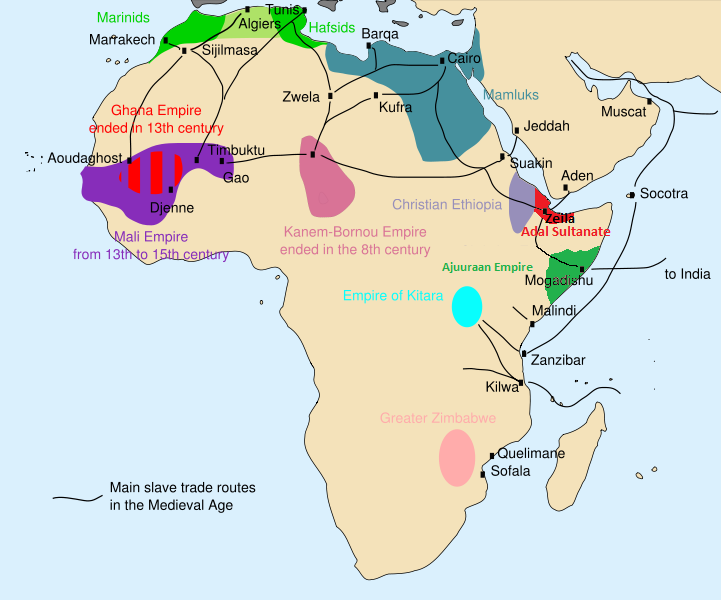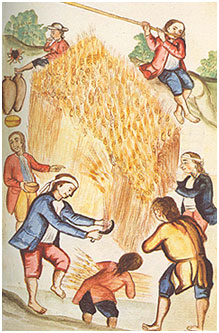|
Social Class In Colombia
There have always been marked distinctions of social class in Colombia, although twentieth-century economic development has increased social mobility to some extent. Distinctions are based on wealth, social status, and race. Informal networks (''roscas'') centered on a person in a position of power are one factor in upper-class dominance. Official demographic categories based mainly on housing characteristics shed some light on the socioeconomic makeup of the population. History Since the sixteenth century, Colombian society has been highly stratified, with social classes generally linked to racial or wealth distinctions, and vertical mobility has been limited. The proportion of white ancestry has been an important measure of status for the mixed groups since the colonial era. In the nineteenth century, Colombia's rugged terrain and inadequate transportation system reinforced social and geographic distance, keeping the numerically superior but disunited masses fragmented and pow ... [...More Info...] [...Related Items...] OR: [Wikipedia] [Google] [Baidu] |
Library Of Congress
The Library of Congress (LOC) is the research library that officially serves the United States Congress and is the ''de facto'' national library of the United States. It is the oldest federal cultural institution in the country. The library is housed in three buildings on Capitol Hill in Washington, D.C.; it also maintains a conservation center in Culpeper, Virginia. The library's functions are overseen by the Librarian of Congress, and its buildings are maintained by the Architect of the Capitol. The Library of Congress is one of the largest libraries in the world. Its "collections are universal, not limited by subject, format, or national boundary, and include research materials from all parts of the world and in more than 470 languages." Congress moved to Washington, D.C., in 1800 after holding sessions for eleven years in the temporary national capitals in New York City and Philadelphia. In both cities, members of the U.S. Congress had access to the sizable colle ... [...More Info...] [...Related Items...] OR: [Wikipedia] [Google] [Baidu] |
Poverty In Colombia
Poverty statistics In 2017, the National Administrative Department of Statistics (DANE) reported that 26.9% of the population were living below the poverty line, of which 7.4% in "extreme poverty". The multidimensional poverty rate stands at 17.0% of the population. Unemployment The average national unemployment rate in 2017 was 9.4%, although the informality is the biggest problem facing the labour market (the income of formal workers climbed 24.8% in 5 years while labor incomes of informal workers rose only 9%). Inequality According to the World Bank, Colombia's Gini coefficient (a measurement of inequality in wealth distribution) was 0.587 in 2000 and 0.535 in 2013, ranking alongside Chile, Panama, Brazil and Honduras as the most unequal Latin American countries in terms of wealth distribution. Related issues Literacy In 2015, a total of 94.58% of the population aged 15 and older were recorded as literate, including 98.53% of those aged 15–24. Malnutrition In 2010, 3. ... [...More Info...] [...Related Items...] OR: [Wikipedia] [Google] [Baidu] |
Race And Ethnicity In Colombia
Race and ethnicity in Colombia descends mainly from three racial groups—Europeans, Amerindians, and Africans—that have mingled throughout the last 500 years of the country's history. Some demographers describe Colombia as one of the most ethnically diverse countries in the Western Hemisphere and in the World, with 900 different ethnic groups. Most Colombians identify themselves and others according to ancestry, physical appearance, and sociocultural status. Social relations reflect the importance attached to certain characteristics associated with a given racial group. Although these characteristics no longer accurately differentiate social categories, they still contribute to one's rank in the social hierarchy. Public Library of Science (PLOS) genetic research determined that the average Colombian (of all races) has a mixture of European 62.5%, native Amerindian 27.4% , African 9.2% and East Asian 0.9%. These proportions also vary widely among ethnicities. Racial/ethni ... [...More Info...] [...Related Items...] OR: [Wikipedia] [Google] [Baidu] |
Illegal Drug Trade In Colombia
The illegal drug trade in Colombia has, since the 1970s, centered successively on four major drug trafficking cartels: Medellín, Cali, Norte del Valle, and North Coast, as well as several ''bandas criminales'', or BACRIMs. The trade eventually created a new social class and influenced several aspects of Colombian culture and politics. The Colombian government efforts to reduce the influence of drug-related criminal organizations is one of the origins of the Colombian conflict, an ongoing low-intensity war among rival narcoparamilitary groups, guerrillas and drug cartels fighting each other to increase their influence and against the Colombian government that struggles to stop them. Overview Colombia had the dubious distinction of being the world-leading producer of coca for many years Worldwide demand for psychoactive drugs during the 1960 and 1970s resulted in increased production and processing of these in Colombia. Cocaine produced at $1,500/kilo in jungle labs can be so ... [...More Info...] [...Related Items...] OR: [Wikipedia] [Google] [Baidu] |
Roscas
Rosca (ring or bagel) is a Spanish and Portuguese bread dish eaten in Spain, Mexico, South America, and other areas. It is made with flour, salt, sugar, butter, yeast, water, and seasonings. It is also called ka'ake and referred to as a "Syrian-style cracker ring". Roscas de reyes variation Roscas de reyes (ring of kings or three King's bread) is eaten on "El Dia de Los Reyes" ("The Day of the Kings"), which is part of the celebration of the Three Kings who visited the baby Jesus to give him gifts (traditionally gold, myrrh, and incense). The cake itself is an oversized version of kingcake colored with candy fruit. Raisins, milk, anise, cinnamon, vanilla, and colorful candy fruit are used depending on the recipe.Virginia Nylander Ebinger Aguinaldos: Christmas customs, music, and foods of the Spanish-speaking countries of the AmericasSunstone Press, 2008 , page 234. At least one plastic miniature figurine of the baby Jesus can be hidden inside the cake. The person who finds it ... [...More Info...] [...Related Items...] OR: [Wikipedia] [Google] [Baidu] |
Liberalism
Liberalism is a political and moral philosophy based on the rights of the individual, liberty, consent of the governed, political equality and equality before the law."political rationalism, hostility to autocracy, cultural distaste for conservatism and for tradition in general, tolerance, and ... individualism". John Dunn. ''Western Political Theory in the Face of the Future'' (1993). Cambridge University Press. . Liberals espouse various views depending on their understanding of these principles. However, they generally support private property, market economies, individual rights (including civil rights and human rights), liberal democracy, secularism, rule of law, economic and political freedom, freedom of speech, freedom of the press, freedom of assembly, and freedom of religion. Liberalism is frequently cited as the dominant ideology of modern times.Wolfe, p. 23.Adams, p. 11. Liberalism became a distinct movement in the Age of Enlightenment, gaining popularity ... [...More Info...] [...Related Items...] OR: [Wikipedia] [Google] [Baidu] |
Afro-Colombian
Afro-Colombians or African-Colombians ( es, afrocolombianos, links=no) are Colombians of full or partial sub-Saharan African descent ( Blacks, Mulattoes, Pardos, and Zambos). History Africans were enslaved in the early 16th Century in Colombia. They were from various places across the continent, including: modern day Congo, Angola, Gambia, Liberia, Ghana, Ivory Coast, Guinea-Bissau, Sierra Leone, Senegal, and Mali. They were forcibly taken to Colombia to replace the Indigenous population, which was rapidly decreasing due to colonialism and genocide. Enslved African people were forced to work in gold mines, on sugar cane plantations, cattle ranches, and large haciendas. African slaves pioneered the extraction of alluvial gold deposits and the growing of sugar cane in the areas that are known in modern times as the departments of Chocó, Antioquia, Cauca, Valle del Cauca, and Nariño in western Colombia. The UNODOC reported 66% of the alluvial gold is illegally mi ... [...More Info...] [...Related Items...] OR: [Wikipedia] [Google] [Baidu] |
Federal Research Division
The Federal Research Division (FRD) is the research and analysis unit of the United States Library of Congress. The Federal Research Division provides directed research and analysis on domestic and international subjects to agencies of the United States government, the District of Columbia, and authorized federal contractors. As expert users of the vast English and foreign-language collections of the Library of Congress, the Division's area and subject specialists employ the resources of the world's largest library and other information sources worldwide to produce impartial and comprehensive studies on a cost-recovery basis. The Federal Research Program is run by the Federal Research Division (FRD), the fee-for-service research and analysis unit within the Library of Congress. The Federal Research Program of the Library of Congress was authorized by the United States Congress in accordance with the Library of Congress Fiscal Operations Improvement Act of 2000 (2 U.S.C. 182c ... [...More Info...] [...Related Items...] OR: [Wikipedia] [Google] [Baidu] |
Economic History Of Colombia
Colombia is now a country mostly in South America, and has been home to many indigenous peoples and cultures since at least 12,000 BCE. Precolonial and colonial history Indigenous peoples in Colombia predominantly cultivated and managed the Colombian climate and geography to develop planting technique using terraces. The indigenous also cultivated grass to use as roofs for their houses, and fique fiber to sew their clothing and artifacts. They also cultivated local fruits and vegetables like yuca and potato for their diet. The indigenous peoples also were avid hunters and consumed processed local fauna. En Colombia: Historia de los Humedales en Bogota; La Dieta Muisca y los Humedales encolombia.com Accessed 19 ... [...More Info...] [...Related Items...] OR: [Wikipedia] [Google] [Baidu] |
Social Class
A social class is a grouping of people into a set of Dominance hierarchy, hierarchical social categories, the most common being the Upper class, upper, Middle class, middle and Working class, lower classes. Membership in a social class can for example be dependent on education, wealth, occupation, income, and belonging to a particular subculture or social network. "Class" is a subject of analysis for List of sociologists, sociologists, political scientists, anthropologists and Social history, social historians. The term has a wide range of sometimes conflicting meanings, and there is no broad consensus on a definition of "class". Some people argue that due to social mobility, class boundaries do not exist. In common parlance, the term "social class" is usually synonymous with "Socioeconomic status, socio-economic class", defined as "people having the same social, economic, cultural, political or educational status", e.g., "the working class"; "an emerging professional class". H ... [...More Info...] [...Related Items...] OR: [Wikipedia] [Google] [Baidu] |
Indigenous Peoples In Colombia
Indigenous peoples of Colombia, are the ethnic groups who have inhabited Colombia since before the European colonization, in the early 16th century. According to the last census, they comprise 4.4% of the country's population, belonging to 115 different tribes.https://www.dane.gov.co/files/investigaciones/boletines/grupos-etnicos/presentacion-grupos-etnicos-2019.pdf Approximately two thirds of the Indigenous peoples of Colombia live in La Guajira, Cauca, Nariño, Cordoba and Sucre Departments. Amazon Basin, a sparsely populated region, is home to over 70 different Indigenous ethnic groups. History Some theories claim the earliest human habitation of South America to be as early as 43,000 BC, but the current scholarly consensus among archaeologists is that human habitation in South America only dates back to around 15,000 BC at the earliest. Anthropologist Tom Dillehay dates the earliest hunter-gatherer cultures on the continent at almost 10,000 BC, during the late Ple ... [...More Info...] [...Related Items...] OR: [Wikipedia] [Google] [Baidu] |









